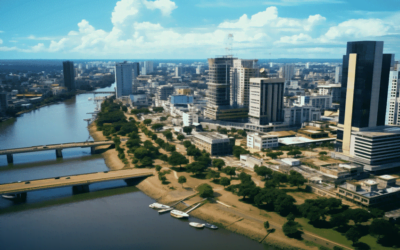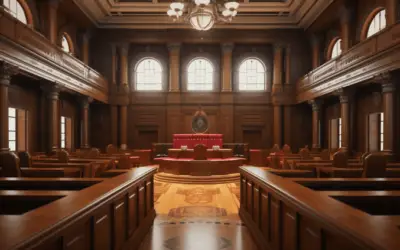Hey there, fellow drone enthusiasts and curious minds! If you’ve found your way here, you’re probably on a quest to unravel the mysteries of Austria’s drone laws.
Well, I get it—it’s not always easy to navigate the sky-high world of drone regulations, and you might be wondering what’s allowed and what’s not in the stunning Austrian landscapes.
You’re in the right place because I’ve got some insights that will make your drone flights in Austria a breeze.
Let me tell you, it’s no simple task to decode the drone laws of Austria. So, after some serious digging and research, I’ve pieced together the puzzle and discovered what you need to know. Austria’s drone laws are as diverse as its picturesque terrain.
From registration requirements to no-fly zones, altitude limits, and even the art of maintaining a visual line of sight, I’ve dived deep into the rabbit hole to bring you the most up-to-date information.
So, if you’re itching to explore the skies of Austria with your trusty drone or maybe just want to stay informed, hang around! In the upcoming sections, I’ll unravel the specifics of Austria’s drone regulations, offering you not only a comprehensive overview but also practical insights to help you soar without any legal turbulence.
Ready for a flight of knowledge? Keep scrolling, my friend, and let’s embark on this drone adventure together!
- Overview of Austrian Drone Regulations
- Registration Requirements for Drone Pilots
- Drone Categories and Classifications
- Austrian Remote Pilot License
- Austrian No-fly Zones and Restricted Areas
- Austrian Altitude Restrictions for Drone Pilots
- Austrian Visual Line of Sight for Drone Pilots
- Austrian Liability Insurance for Drone Pilots
- Data Protection and Privacy in Austria
- Authorization for Special Operations
- Enforcement and Penalties for Defaulters
- Final Thoughts on Austria Drone Laws
Overview of Austrian Drone Regulations

Alright, let’s dive into the nitty-gritty of Austria’s drone regulations. To fly safely and legally in this beautiful country, it’s crucial to understand who’s calling the shots, what laws are in place, and whether there have been recent changes.
The authority responsible for drone regulations
Picture this: Every time you take your drone out for a spin in Austria, there’s an invisible hand guiding the rules and ensuring the skies stay safe. Meet the maestro behind the scenes: Austro Control.
These folks are the authorities responsible for keeping an eye on all things drone-related. They’re like the air traffic controllers for drones, making sure everyone follows the rules and plays nice in the sky. So, when Austro Control speaks, drone operators listen.
The legal framework governing drone operations in Austria
Now, let’s talk about the rulebook. Drone laws don’t just float around in thin air; they’re grounded in a legal framework. In Austria, these laws are carefully detailed in the Austrian Aviation Act.
It’s the grand rulebook that governs all things aviation, including drones. Think of it as the constitution of the drone world in Austria.
It’s what keeps everything in order, sets the dos and don’ts, and ensures that the skies remain safe for all. So, it’s crucial to acquaint yourself with this legal backbone before you take flight.
Recent changes and updates to drone laws (if any)
Now, we all know that rules can change, and the same goes for drone laws in Austria. The aerial landscape is dynamic, and regulations can evolve over time.
You might be wondering, “Have there been any updates lately?” Well, my fellow drone enthusiasts, that’s a fantastic question. Regulations can change due to various factors: technological advancements, safety concerns, or even lessons learned from past incidents.
So, always keep an ear to the ground for the latest updates. It’s like updating the software on your drone; you don’t want to be flying with outdated information. Stick around, and I’ll keep you posted on the most recent changes.
Also Read: Drone Laws in Australia 2024
Registration Requirements for Drone Pilots

Let’s talk about the essential step before you take off with your drone in Austria: registration. It’s like getting your ticket to enter the drone airspace, and it’s important to understand who needs to do it, how to do it, and what you’ll need.
Who needs to register their drone?
Imagine you’re about to go on a road trip, and you’ve got to register your vehicle. Well, the same goes for drones. In Austria, drones weighing more than 250 grams need to be registered with Austro Control, the country’s aviation authority.
Think of it as making your drone an official member of the Austrian aerial club. It’s not just about weight; it’s about ensuring accountability and safety in the skies.
The process for drone registration
So, how do you get your drone that coveted membership card? The process is quite straightforward.
You need to fill out the registration form provided by Austro Control. It’s like filling out your application for a driver’s license.
They’ll want to know your name, address, and some details about your drone, including its make and model. Once you’ve completed the form, you’ll receive a registration certificate. It’s your golden ticket to fly in Austrian airspace legally. Keep it safe, just like your driver’s license.
Documents and information required for registration
When you’re going to register your drone, it’s like preparing your documents for an international trip. You’ll need to provide your personal information, proof of identity, and details about your drone.
Think of it as customs at the airport; they need to know who you are and what you’re bringing into the country. So, have your identification documents ready, and make sure you know your drone inside out.
Penalties for operating an unregistered drone
Now, here’s the catch. What if you decide to skip the registration process and take your drone for a spin? Well, my friend, that’s not a wise move. Operating an unregistered drone can lead to penalties and fines.
It’s a bit like driving without a valid driver’s license; you risk facing the consequences. So, always play by the rules and get that drone registered. It’s the key to soaring the Austrian skies without any legal turbulence.
Also Read: Drone Laws in Armenia 2024
Drone Categories and Classifications

Now, let’s get into the different drone classes and what they mean for your flying adventures in Austria. It’s like understanding the different types of vehicles on the road, each with its own set of rules.
Class 1 drones (5 kilograms and above)
Class 1 drones are the heavyweights of the drone world, weighing in at 5 kilograms or more. They’re like the SUVs of the skies—robust and substantial. When flying these hefty machines in Austria, you need to jump through a few hoops.
The regulations for Class 1 drones are more stringent, and you’ll typically need a remote pilot license to operate them. It’s similar to needing a special license to drive a big rig.
Class 2 drones (500 grams to 5 kilograms)
Class 2 drones fall in the mid-range, weighing between 500 grams and 5 kilograms. These are like family sedans: versatile and popular.
The rules for Class 2 drones are somewhat in between—not as strict as Class 1 but not as relaxed as Class 3.
You might still need a remote pilot license for these drones, depending on the specifics of your flight. It’s akin to having different requirements for regular and commercial driver’s licenses.
Class 3 drones (Less than 500 grams)
Class 3 drones are featherweights, weighing less than 500 grams. They’re like small city cars—nimble and easy to handle.
Flying Class 3 drones in Austria is generally less complicated. You won’t need a remote pilot license for these lightweights. It’s as simple as a regular driver’s license for your everyday car.
Different rules and requirements for each class
You see, each class comes with its own set of rules, requirements, and restrictions. These rules are in place to ensure safety and accountability.
Just as you wouldn’t drive your sedan with a trucker’s license, it’s important to understand the specific rules for your drone’s class. So, whether you’re flying a hefty Class 1, a versatile Class 2, or a nimble Class 3 drone, knowing the regulations for your category is vital for smooth and legal flights.
Also Read: Drone Laws in Argentina 2024
Austrian Remote Pilot License

Now, let’s talk about something that’s a bit like getting your driver’s license for the drone world—the remote pilot license. It’s not just about owning a drone; sometimes, you need a special permit to operate it legally in Austria.
When is a remote pilot license required?
So, when exactly do you need this special license? Well, it comes into play when you’re handling Class 1 or Class 2 drones. It’s like needing a commercial driver’s license for that big rig; when you’re dealing with the heavyweights, you need to be properly trained and certified.
Flying Class 3 drones? You’re in the clear—no remote pilot license is required.
The process for obtaining a remote pilot license
Getting your remote pilot license isn’t rocket science, but it does involve some hoops to jump through. You’ll need to attend a training course at a recognized flight school in Austria.
It’s like attending driving school before you hit the road. Once you’ve completed the training, you’ll need to pass an examination.
Think of it as a driver’s test but for drones. If you pass with flying colors (pun intended), you’ll receive your remote pilot license. Now you’re ready to soar the Austrian skies legally!
Topics covered in the examination
So, what’s on the exam? You’ll be tested on various topics, including air law, aerodynamics, and flight operations. It’s a bit like your regular driving test, but with an aviation twist.
You need to demonstrate your knowledge and skills in managing your drone safely and responsibly. Once you’ve passed the exam, you’re officially a licensed remote pilot.
Responsibilities and privileges of licensed remote pilots
Having that remote pilot license isn’t just a badge of honor; it comes with responsibilities and privileges. As a licensed remote pilot, you’re responsible for ensuring the safety of your flights and complying with all regulations.
You can take your drone to new heights, quite literally, and engage in commercial activities like aerial photography or surveying. It’s like having a commercial driver’s license that allows you to take on special jobs.
So, if you’re planning to fly a Class 1 or Class 2 drone in Austria, get ready to earn your wings with a remote pilot license.
Austrian No-fly Zones and Restricted Areas
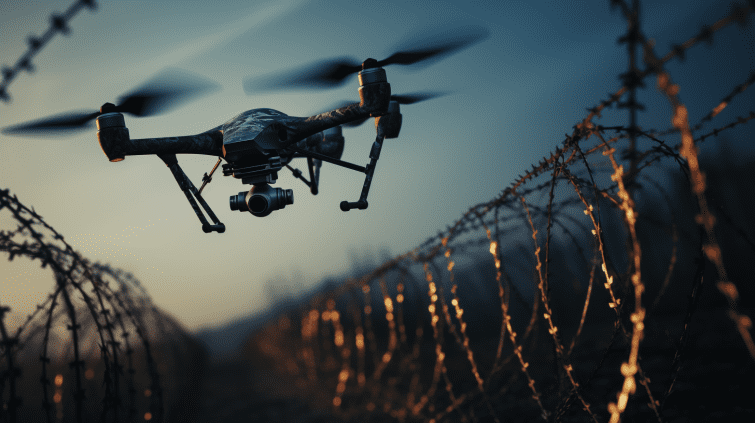
Now, let’s discuss the places where your drone should absolutely stay grounded. Just like there are areas where you can’t park your car, there are no-fly zones and restricted areas for drones. Knowing these areas is crucial to ensuring safe and legal flights.
Prohibited areas for drone flight
Picture this: you’re at the airport, and there’s a huge sign that says “No Parking—Tow Away Zone.” Well, for drones, airports and their vicinity are strict no-go areas.
You simply can’t fly your drone near airports, government buildings, or other sensitive locations. These areas are off-limits for good reason: to prevent interference with manned aircraft and to protect sensitive facilities.
Restricted airspace and military zones
Austria’s got its share of restricted airspace and military zones, just like other countries do. These areas are like the VIP sections, where only authorized personnel are allowed.
Flying your drone in these zones is a serious breach of regulations. It’s similar to wandering into a military base without permission—it’s something you just don’t do.
Implications of violating no-fly zones
Now, what happens if you decide to disregard these no-fly zones and restricted areas? Well, my friend, it’s not a road you want to travel down. Violating these zones can lead to fines, penalties, and even criminal charges. It’s a bit like getting a hefty parking ticket, or worse.
So, always be aware of your surroundings, respect the no-fly zones, and steer clear of restricted areas. It’s all about ensuring safety and adhering to the law, for the sake of your drone and everyone else in the skies.
Also Read: Drone Laws in Antigua and Barbuda 2024
Austrian Altitude Restrictions for Drone Pilots
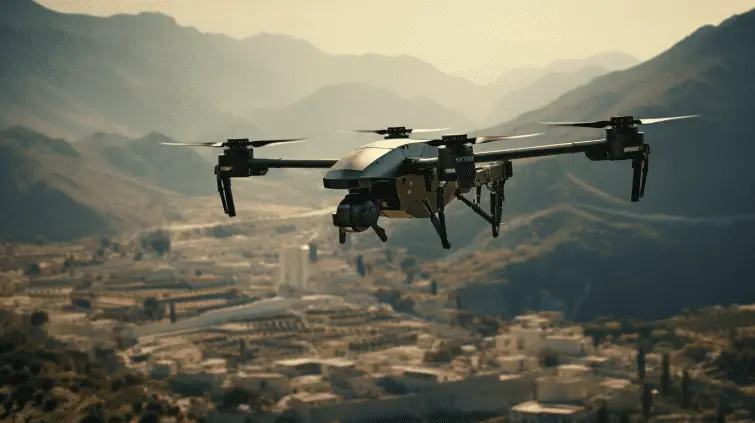
So, here’s the scoop on flying high in Austria: there are altitude restrictions in place, and they’re there for good reasons. Just like traffic signs tell you the speed limit on the road, altitude restrictions ensure safe and responsible drone flights.
Maximum permissible altitude for drone flights
In Austria, drones are not allowed to soar above 150 meters, which is about 492 feet, above the ground. It’s like a built-in speed limit for your drone flights.
Going beyond this altitude could potentially lead to safety risks and interference with other aircraft, including helicopters and planes. So, it’s essential to keep your drone’s feet on the ground, metaphorically speaking, and not exceed this altitude limit.
Safety concerns and aviation considerations
Safety is a top priority in the world of drones, just as it is in aviation. The altitude restrictions are in place to prevent conflicts in the airspace.
Think of it as lanes on a highway; if everyone stays in their lane, it’s a smooth and safe journey. But if you stray into someone else’s territory, you risk accidents and chaos.
The altitude limit is designed to ensure that drones don’t accidentally interfere with manned aircraft, which could have severe consequences.
Consequences of exceeding altitude limits
Now, what if you decide to push the limits and exceed the altitude restriction? Well, aside from potential safety hazards, there are legal consequences. Operating your drone above the specified limit can result in penalties and fines. It’s like getting caught speeding on the road.
So, respecting the altitude restriction isn’t just a safety measure; it’s also a legal requirement.
It’s all about responsible and lawful drone flying, and that’s a win-win for everyone in the airspace.
Also Read: Drone Laws in Angola 2024
Austrian Visual Line of Sight for Drone Pilots
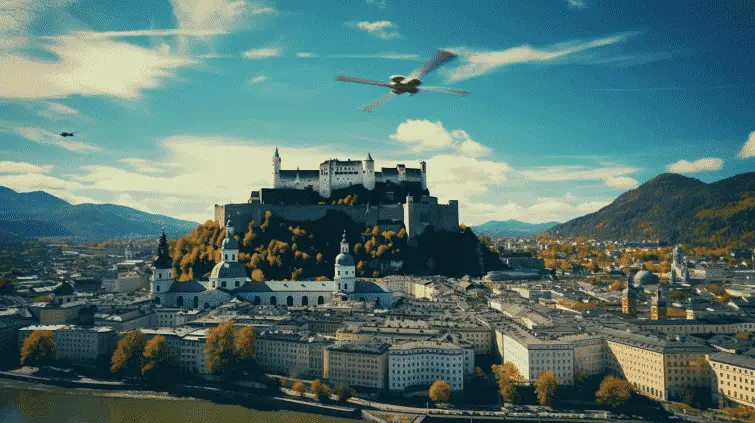
Now, let’s talk about something that’s absolutely crucial for safe drone flights: maintaining a visual line of sight with your flying buddy. Just like you keep your eyes on the road while driving, it’s essential to keep an eye on your drone while it’s up in the sky.
Requirements to maintain visual contact with the drone
In Austria, there’s a requirement that you, as the operator, maintain direct visual contact with your drone at all times. It’s like when you’re playing catch with a frisbee in the park—you wouldn’t throw it blindly and hope for the best.
The idea here is to ensure that you can see your drone and respond to any potential issues or obstacles promptly. It’s all about keeping the flying experience safe for everyone involved.
The importance of maintaining line of sight for safe operations
Maintaining a visual line of sight is not just a rule; it’s a safety measure. Imagine you’re navigating your drone through a forest of trees or near buildings.
If you can’t see your drone, you might accidentally fly it into an obstacle or, worse, another aircraft. It’s a bit like driving blindfolded—you’re in for a crash sooner or later. So, the rule is there to keep you, your drone, and others in the airspace safe and sound.
Use of visual aids and technology to enhance visual line of sight
Now, technology is pretty nifty, and it can help us maintain that visual contact. You can use binoculars, FPV (First Person View) systems, or even drones equipped with cameras to enhance your line of sight.
It’s like having a pair of high-powered glasses while driving—it helps you see things better. These aids can extend your visual reach, but remember, you must still keep your drone in your direct line of sight.
They’re helpful tools that complement your ability to see your drone without putting safety at risk. So, when flying in Austria, keep an eye on your drone, quite literally, for a smooth and safe journey through the skies.
Also Read: Drone Laws in Andorra 2024
Austrian Liability Insurance for Drone Pilots

Time to talk about an essential aspect of responsible drone ownership: liability insurance. It’s a bit like having insurance for your car; it’s a safety net for unforeseen circumstances in the world of drones.
Mandatory liability insurance for all drone operators
In Austria, every drone operator is required to have liability insurance. It’s not a suggestion; it’s a must. Think of it as the insurance policy you have for your car—it’s there to cover you in case of any accidents or damages.
This insurance ensures that if your drone were to accidentally cause any harm or damage, there’s a financial safety net in place. It’s all about being a responsible drone pilot.
Coverage and benefits of drone liability insurance
So, what does this insurance cover? It typically provides coverage for damages or injuries caused by your drone to third parties, including property damage and bodily harm.
It’s like if your drone accidentally crashes into someone’s car or causes injury, insurance steps in to cover the costs. It’s a protective shield, ensuring that you don’t have to bear the full financial brunt of an accident.
Penalties for flying without insurance
Now, what if you decide to fly your drone without this mandatory insurance? Well, that’s not a wise move. The penalties for flying without insurance can be quite severe, including fines and even imprisonment in some cases.
It’s similar to driving without car insurance—it’s illegal and can land you in hot water. So, if you’re taking to the skies with your drone in Austria, make sure you’ve got that mandatory liability insurance in place.
It’s like having that safety net beneath you, ensuring a responsible and secure journey through the aerial realm.
Also Read: Drone Laws in Algeria 2024
Data Protection and Privacy in Austria
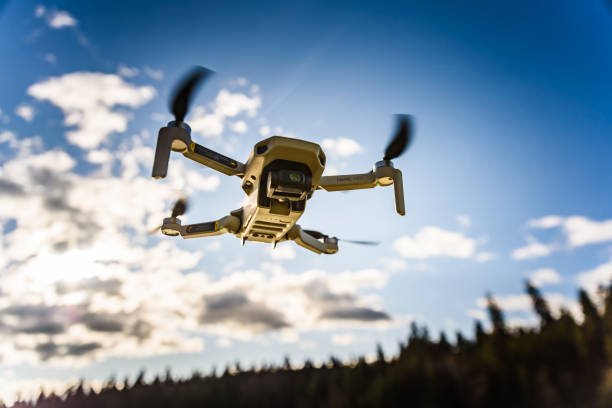
In this digital age, data protection and privacy are paramount. When it comes to drone operations in Austria, these aspects are not taken lightly. Let’s explore the regulations, privacy considerations, and steps to ensure compliance with data protection laws.
Regulations concerning data collection through drones
Drones equipped with cameras have the ability to capture a whole lot of data. It’s like having a super-powered camera with wings. However, there are strict regulations in place in Austria concerning data collection through drones.
You must comply with data protection laws and, in particular, the General Data Protection Regulation (GDPR). This means being mindful of what you’re capturing and how it’s used. It’s all about respecting people’s privacy and the law.
Privacy considerations when capturing images or videos
Imagine you’re out for a leisurely walk, and suddenly a drone flies overhead, capturing images or videos. It can feel invasive, right? That’s why it’s important to consider privacy when operating a drone in Austria.
You should avoid capturing images or videos of individuals without their consent, especially in private settings. It’s like respecting personal boundaries—you wouldn’t randomly snap photos of people without permission in your everyday life, so the same courtesy applies in the sky.
Steps to ensure compliance with data protection laws
To ensure compliance with data protection laws in Austria, you need to take some practical steps. First and foremost, be aware of the regulations and educate yourself on GDPR and other relevant laws.
Secondly, inform people in the area where you’re flying that drone operations are taking place. It’s like putting up a sign when you’re filming in a public place. Lastly, avoid storing or sharing images or videos captured by your drone without a valid reason and proper consent.
It’s all about being responsible and respecting the privacy of individuals while enjoying the benefits of drone technology.
Also Read: Drone Laws in Albania 2024
Authorization for Special Operations

Sometimes, drone operations go beyond the ordinary, and special circumstances call for special permissions. Let’s delve into the types of special operations that require prior authorization, the application process for permits, and the importance of considering safety and security.
Types of special operations requiring prior authorization
Special drone operations can include flying at night, flying above crowds, or conducting aerial work in controlled airspace.
For these types of operations, you’ll need prior authorization. It’s like planning a unique event that requires a special permit—you need to follow a distinct set of rules and get the green light to proceed.
The application process for special operation permits
Getting authorization for special operations involves an application process. You’ll need to submit a request to Austro Control, detailing the specifics of your operation and explaining why it’s necessary.
It’s similar to applying for an event permit in your city, where you describe the event, its purpose, and how you plan to ensure safety. Once your application is reviewed and approved, you’ll receive a special permit for your operation.
Safety and security considerations for special operations
Safety and security are paramount, especially during special drone operations. Just as event organizers need to ensure the safety of attendees, drone operators must prioritize safety.
This includes having contingency plans in case of emergencies, ensuring compliance with regulations, and taking measures to prevent accidents.
It’s like organizing a fireworks show; safety measures are crucial to preventing mishaps. With the right precautions in place, special drone operations can be conducted safely and legally in Austria.
Also Read: Drone Laws in Afghanistan 2024
Enforcement and Penalties for Defaulters
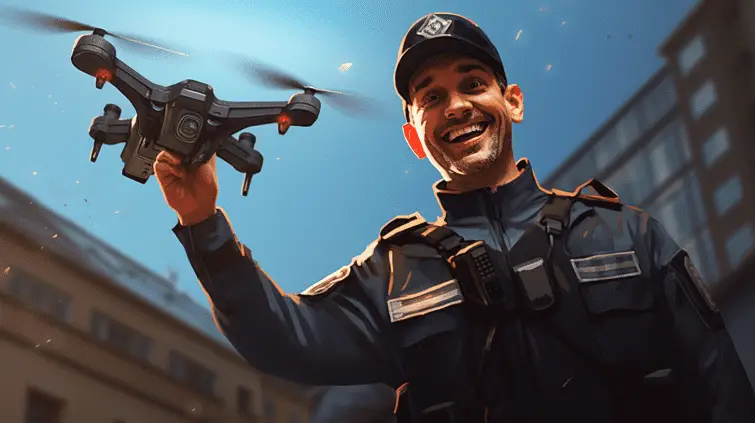
Now, let’s talk about the enforcement of drone regulations in Austria and the penalties for those who choose to ignore them. Just like traffic laws are enforced by the police, drone regulations are upheld to ensure safe and responsible skies.
How drone regulations are enforced in Austria
Drone regulations in Austria are enforced primarily by Austro Control, the country’s aviation authority.
They oversee the implementation and monitoring of drone laws. It’s a bit like having traffic officers who ensure that everyone on the road follows the rules. Additionally, local law enforcement may also be involved in cases of severe violations.
Penalties for violating drone laws
When it comes to penalties, it’s crucial to follow the rules. Violating drone laws can lead to fines that vary depending on the severity of the violation.
For instance, flying in restricted airspace or failing to register your drone can result in significant fines. Think of it as getting a hefty speeding ticket, or worse, for serious violations. It’s a costly and avoidable consequence of disregarding the law.
The role of authorities and law enforcement in regulating drones
Authorities and law enforcement play a pivotal role in regulating drones. They work to maintain the safety of the airspace and protect people and property on the ground. It’s similar to how police ensure safety on the roads.
They may investigate complaints, monitor drone activities, and take appropriate action against violators. By upholding regulations and enforcing penalties when necessary, they contribute to the responsible and safe use of drones in Austria.
So, it’s always wise to fly your drone in accordance with the law to avoid legal trouble and maintain the well-being of the skies.
Final Thoughts on Austria Drone Laws
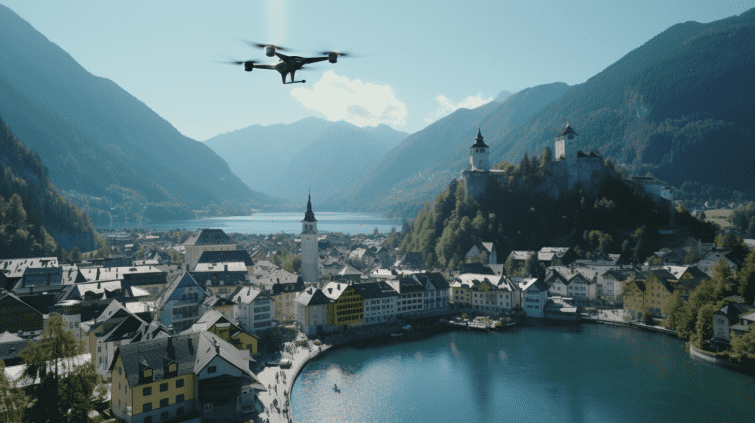
As we wrap up this journey through Austria’s drone regulations, let’s take a moment to recap the key points, emphasize the importance of staying informed and compliant, and acknowledge the ever-evolving nature of these regulations.
We’ve covered a lot in this article, from the different drone categories to the requirements for remote pilot licenses and the importance of liability insurance.
We’ve explored the significance of maintaining a visual line of sight and respecting no-fly zones. It’s like knowing the ins and outs of the road rules before embarking on a cross-country drive.
By understanding these regulations, you not only ensure safe and responsible drone flights but also avoid potential penalties and legal issues.
Staying informed and compliant with Austria’s drone regulations is not just a legal obligation; it’s a responsible choice.
Just as a responsible driver keeps up with the latest traffic laws, a responsible drone operator must stay informed about the evolving rules.
This ensures the safety of the skies and the well-being of those on the ground. It’s a bit like regularly checking your car’s maintenance to ensure it runs smoothly—staying informed about drone regulations is part of responsible ownership.
One thing to keep in mind is that drone regulations are not set in stone. They’re like a constantly evolving roadmap. As technology advances and new challenges arise, regulations may change.
It’s essential to stay updated and adapt to these changes, just as we adapt to new road signs and traffic rules. Continuous learning and adjustment are key to maintaining safe and responsible drone operations.
In conclusion, Austria’s drone laws are in place to ensure the safety and security of the skies. By understanding and following these regulations, drone enthusiasts can enjoy their hobby or profession while contributing to the responsible and lawful use of this remarkable technology.
Remember, the sky’s the limit, but it’s important to know the rules before you take flight. Happy and safe droning!








